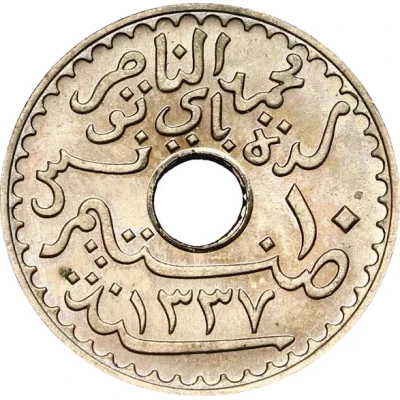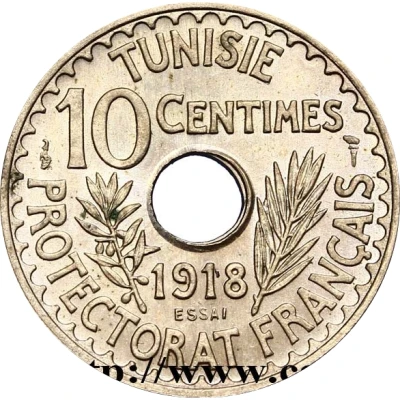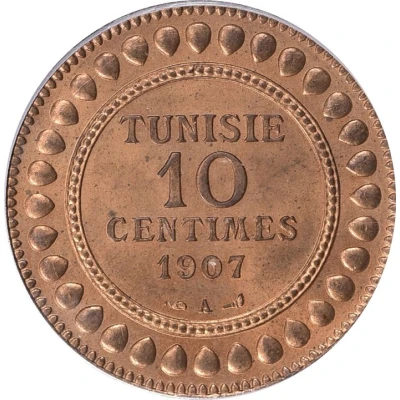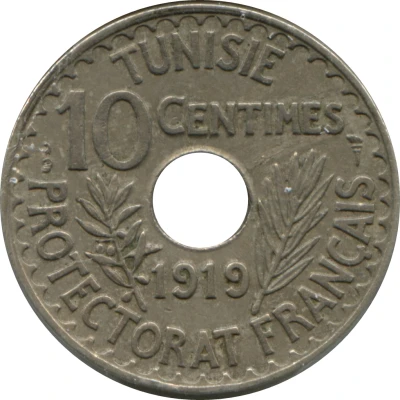


© CGB
10 Centimes - Muhammad V Essai
1337 (1918) year| Nickel brass | 4 g | 21 mm |
| Issuer | Tunisia |
|---|---|
| Ruling authority | Muhammad V (1906-1922) |
| Type | Pattern |
| Year | 1337 (1918) |
| Calendar | Islamic (Hijri) |
| Value | 10 Centimes (0.10 TNF) |
| Currency | Franc (1891-1957) |
| Composition | Nickel brass |
| Weight | 4 g |
| Diameter | 21 mm |
| Thickness | 1.5 mm |
| Shape | Round with a round hole |
| Technique | Milled |
| Orientation | Coin alignment ↑↓ |
| Demonetized | Yes |
| Updated | 2024-10-08 |
| Numista | N#112635 |
|---|---|
| Rarity index | 87% |
Reverse
Value and Gregorian Date
Script: Latin
Lettering:
TUNISIE
10 CENTIMES
1918
ESSAI
PROTECTORAT FRANÇAIS
Translation:
Tunisia
10 Centimes
1918
Essai
French Protectorate
Engraver: Henri-Auguste Patey
Edge
Plain
Comment
Essai of KM#243Interesting fact
One interesting fact about the Pattern 10 Centimes - Muhammad V (Essai) 1337 (1918) from Tunisia is that it features a unique blend of Arabic and European influences in its design. The obverse side of the coin depicts a portrait of Muhammad V, the Bey of Tunis, wearing a fez and a cloak, while the reverse side features an Arabic inscription surrounded by a wreath, which is a common motif in European coinage. This blending of styles reflects the cultural exchange and fusion that occurred during the period of French colonial rule in Tunisia.



